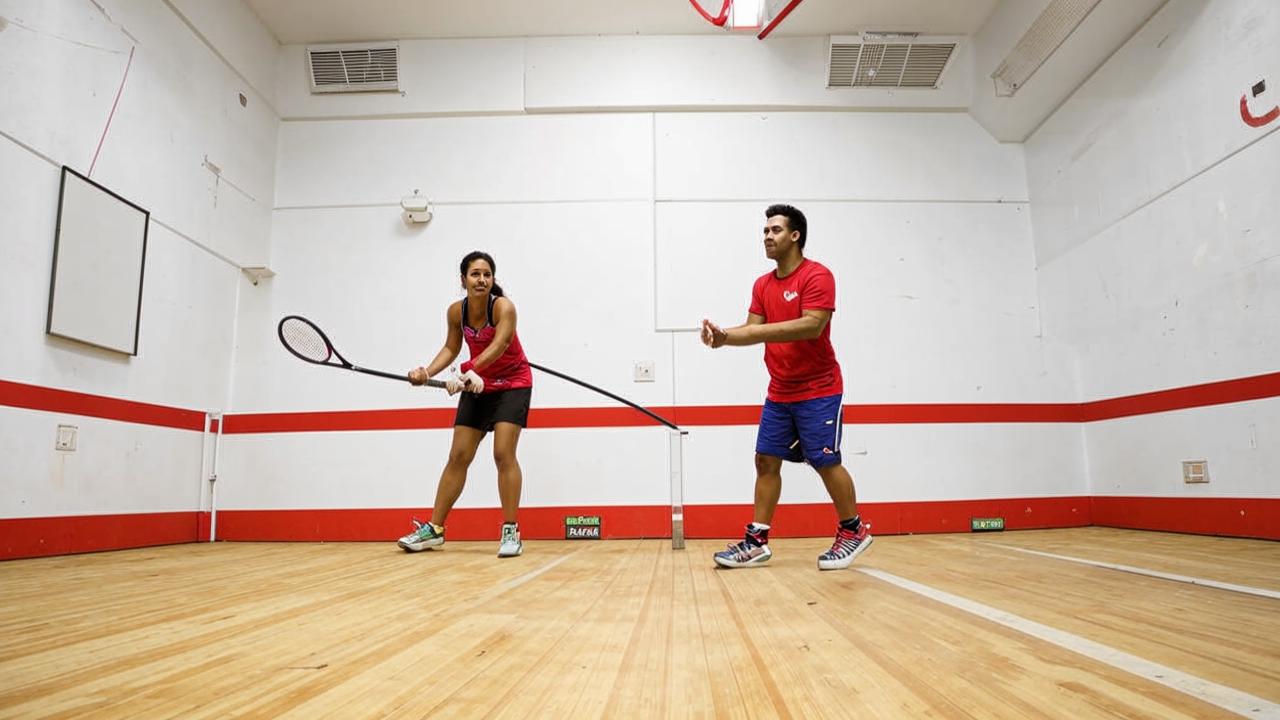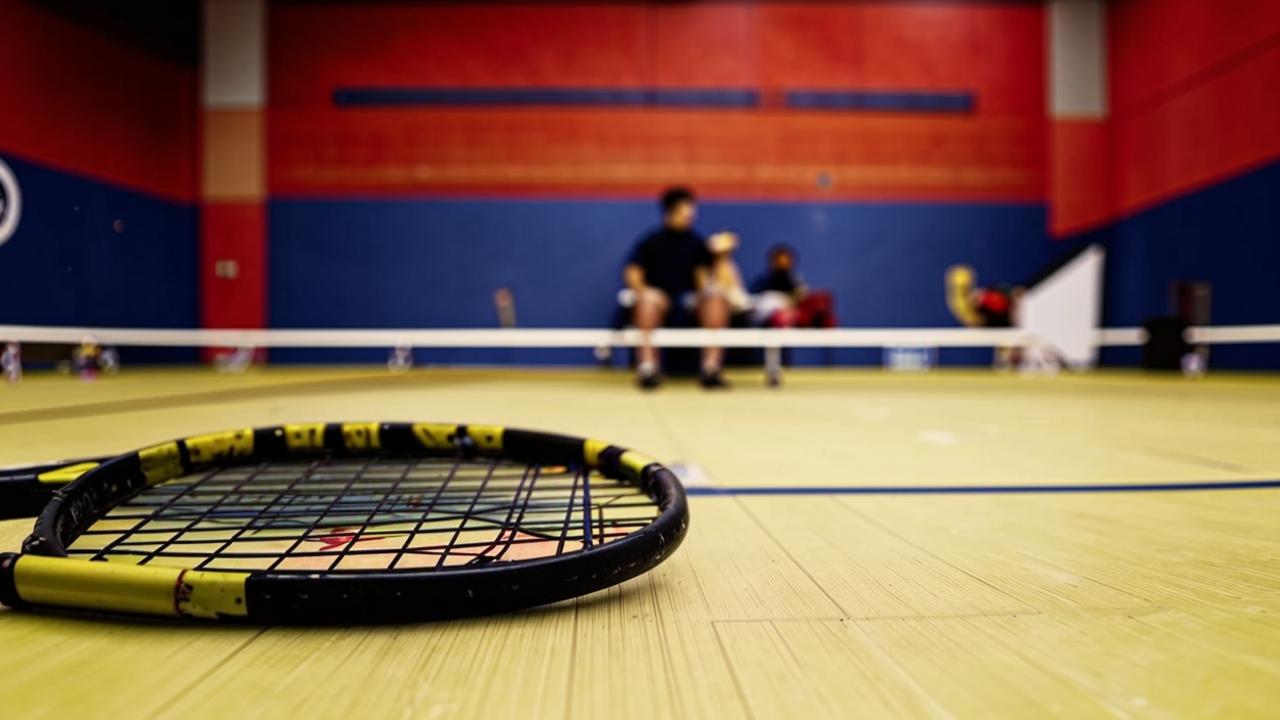Squash is a racquet sport played indoors. The name of the game (from the English squash) refers to the use of a relatively soft hollow ball with a diameter of about 40 mm, which literally flattens when it hits the wall. The ancestor of squash is considered to be the game of rackets (rackets or racquets – American variant of the name), which, unlike squash, uses a rather hard ball. The game (single – two players; or doubles – four) is played with special rackets on a court surrounded on four sides by walls.

How did squash come to be?
The history of squash begins in the XIX century in the prestigious closed school for boys Harrow (London, England). The students of this school, languishing waiting for their turn to go to the racquet court, began to play a softer ball against the walls of nearby buildings, and eventually a new game was born. The first specialized squash court was built there in Harrow in 1860.
Until the beginning of the XX century the game was developed in the walls of various educational institutions, but over time began to gain popularity in private clubs (for example, in the “London Royal Automobile Club”) and in the ranks of officers of the British Armed Forces. In the USA in 1907 the first squash association was established and the first rules of the new game were drawn up. Today the international administration in the world of squash is handled by: WSF (World Squash Federation) – World Squash Federation; PSA (Professional Squash Association) – Professional Squash Players Association for men; WISPA (Women’s International Squash Players Association) – Professional Squash Players Association for women.
Squash court on the Titanic
For a long time squash was an elite game of the upper classes of society. It became more accessible only in the 1950s, when mass commercial construction of courts began. The game’s popularity boomed in the early 1980s. Today, squash remains extremely popular in many parts of the world, especially in Australia, northeastern Europe, North America, Southeast Asia, Egypt and the Arab Emirates.
8 facts about squash that surprised us
– Today, squash courts exist in 152 countries from Argentina to Papua New Guinea (and that’s no joke!). In at least 10 countries squash is more popular than hockey.
– The flight speed of a squash ball reaches 260-270 km/h, which is twice as fast as the maximum speed of a soccer ball. The owner of the most powerful shot is 35-year-old Australian squash player Cameron Pilley. The speed of the ball after hitting Cameron’s racket reaches 280 kilometers per hour.
– The most prestigious squash competitions are held in iconic places: at the foot of the Egyptian pyramids, in the Grand Philharmonic Hall in Boston, in Trafalgar Square in London, in the Grand Central Station in New York.
– Squash is one of the British Royal Family’s favorite sports, but the 2017 men’s and women’s world squash champions were husband-and-wife players from Egypt.
– When it comes to outstanding squash players, among the men, we must mention Hashim Khan who inaugurated a valiant dynasty of great Pakistani squash champions, which was continued by Jahangir Khan and Jansher Khan. Jahangir Khan is a 12-time world champion with 99 professional titles. His phenomenal speed, brilliant technique and ability to anticipate his opponent’s game set him apart from other players on the court. His retirement from professional sports ended 50 years of Pakistan’s leadership in squash
– Forbes magazine named squash as the healthiest sport. During a workout, you can burn between 500 and 1500 kilocalories, providing your body with an excellent cardio workout.
– For a long time squash was an elite game of the upper classes of society. By the way, there was a squash court on the Titanic, and only first class passengers could use it.
Historical note. A note on the Titanic’s chart read, “The squash court is located on deck F and is operated by a professional player. Tickets for use of the court may be obtained at the booking office, and there, if desired, the professional coach may be paid for: 50 cents (pool ticket cost $1) per half hour. Balls can be purchased from the coach, and you can buy or rent a racket from the coach. For a fee, you can reserve a court with the coach in advance, but you are not allowed to occupy it for more than an hour if there are others who want to play.”
– Squash is the most likely contender for inclusion in the Olympic Games in 2024 in Paris.
How is squash developing in Russia?
As for the history of squash in Russia, as a sport it began to develop in our country in 1989, when the first competition between amateurs of this sports game was organized in Moscow. In November 1990, the founding conference of the Russian Squash Federation was held in Moscow. In 1991 the Russian Squash Federation was accepted into the European and International Squash Federations.
And although squash still cannot be called massively popular, it is nevertheless attracting more and more beginners – both adults and children – many of whom achieve high results at amateur and professional level. For example, 14-year-old Russian Alesya Alyoshina (Nizhny Novgorod) won the Nordic Junior Squash Open 2017 Super Series Nordic Junior Squash Open 2017 in the under-15 age category, held in Malmö in October 2017.

In addition, in the fall of this year on the courts of the National Squash Center (Moscow) for the first time in Russia took place the International Junior Squash Championship Russian Junior Open. The tournament became an important event in the world of children’s sports, clearly showing that squash is reaching a new level and is capable of becoming a mass sports hobby for the young generation.






